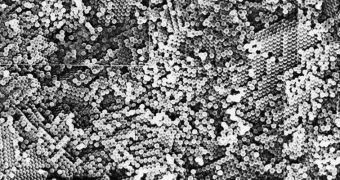Cancer is one of the most devastating diseases in the world today. When patients are infected, or develop the condition due to their unhealthy lifestyle, tumors appear and develop really fast. Some forms of cancer kill in years, whereas others take only a few months to do their nasty work. A potential approach to treating the disease relies on the use of nanoparticles, but their actions inside the human body are not yet thoroughly known. This decreases the end efficiency of the treatment. Now, a science group is looking deeper into this deficiency, AlphaGalileo reports.
The research group is made up from experts at the University Hospital Jena's Institut fur Diagnostische und Interventionelle Radiologie (IDIR), and Physikalisch-Technische Bundesanstalt (PTB), both in Germany, The IDIR team is led by expert Melanie Kettering, who collaborates with colleague Heike Richter, the leader of the PTB side of the project. The research initiative is supported by the Deutsche Forschungsgemeinschaft, and it reunites physicists with biomedical physicians and other healthcare experts.
The end result is to gain new insight into how heat-based treatments using nanoparticles could destroy cancer tumors. Even if the minute particles are injected directly into cancerous tissue, there is no guarantee that they will remain there, and not get distributed throughout the body. The scientists say that applying heat to the magnetic nanoparticles could become ineffective, or even harmful, if scientists don't know where the small structures are. The German collaboration plans to shed some light on the patterns underlying nanoparticle motion inside the human body.
The medical technique using nanoparticles at a large scale to treat tumors has yet to find its way into common clinical use. Experts are still conducting trials of how the structures perform, but their hopes are high that the method will be implemented in hospitals around the world soon. The approach relies on heating up the nanoparticles directly inside the tumor, by applying an external electromagnetic field. Temperatures need to reach 55 to 60 degrees Celsius inside the tumors in order for the cancer cells to be irreversibly destroyed. But the technique must not destroy healthy tissue, and so knowing where the magnetic particles are is of extreme importance.

 14 DAY TRIAL //
14 DAY TRIAL //